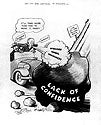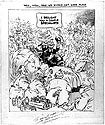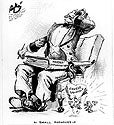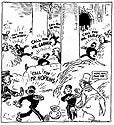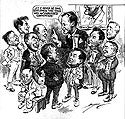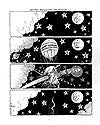Introduction
One of the frequent perquisites available to political office-holders at whatever level is obtaining the original versions of editorial cartoons that feature said statesman or political hack. Sometimes the cartoons come direct from the cartoonist, sometimes from a third party, and lately at least sometimes they are just plain purchased. Senator Robert F. Wagner of New York, one of the congressional leaders of the New Deal, referred to such things, when they expressed positive sentiments, as “dope,” and it’s easy to see how an office full of smiling familiar faces might have that effect. And then there was that other New Dealer, Harry Hopkins.
The 21 original cartoons in this exhibit were gathered by Hopkins during the years 1936 to 1940, the period when he first came into Roosevelt’s government as head of the WPA, became Secretary of Commerce, dealt with the 1940 census, and had a very brief fling with ideas about the presidency itself. But by Bob Wagner’s standard very few, if any, of these cartoons could be classed as “dope.” Hopkins takes his chair at Commerce and sits on something very sharp; he blows hot air at a boulder that obstructs the path of his car; he’s portrayed dressed as a Victorian undertaker; with Harold Ickes he’s seen in drag in a kitchen warring over Ickes’s PWA “dough” to Roosevelt’s somewhat amused annoyance; his programs are portrayed as merely a scam to buy votes. And the puncturing of his presidential aspirations receives the approval of the universe.
The cartoons themselves, however, are another matter. Of the 18 cartoonists represented, no less than eight were awarded one or more Pulitzer Prizes for their efforts, and a number won more than once. Their work is generally done in fairly large scale, all fully drawn at a level that most modern cartoonists would find fussy, perhaps, but challenging enough to turn out on a daily basis. The humor, when there is any, is that of “Major Hoople” and “Gasoline Alley” rather than of “Doonesbury” or “Liberty Meadows.” The cartoon subjects are adults operating in a world that isn’t very agreeable, but one where common sense and a certain degree of decency are assumed. It doesn’t matter that Harry Hopkins as “Prophet of Gloom” isn’t funny, or even that his gloom might well be justified.
Harry Hopkins’s personal papers were donated to the library by his son, Robert Hopkins, and the cartoons were a subsequent gift from Hopkins’s daughter, Diana Hopkins Halsted.
Untitled
Edwin Cox and Jack Bliss
Publisher's Syndicate
1939
268 x 226 mm
Ink and crayon on board
Inscribed: "To Secretary Hopkins with best wishes Edwin Cox"
Righteous Indignation!
Washington Daily News
Talburt won the Pulitzer Prize for editorial cartooning in 1933.
Good Neighbors
The Columbus Evening Dispatch
Inscribed: "to Mr. Harry Hopkins - compliments of Ray Evans Aug 19, 1936"
I Look to See the Relief Curve Go Down at an Early Date
The Washington Post
Inscribed: "To: Harry Hopkins, with sincere good wishes Gene Elderman"
Home Again
Inscribed: "To Harry L. Hopkins with the compliments of The Evening Public Ledger & C. H. Sykes - May 15 '39."
Philadelphia Evening Public Ledger
Another Noble Experiement [sic]
Duffy won the Pulitzer Prize for editorial cartooning in 1931, 1934, and 1940.
Baltimore Evening Sun
Get Out the Crowbar of Economy
Inscribed [by Goldberg]: "with personal greetings to Harry L. Hopkins" Goldberg won the Pulitzer Prize for editorial cartooning in 1948.
New York Evening Sun
Well, Well, Now We Should Get Some Place
Shoemaker won the Pulitzer Prize for editorial cartooning in 1938 and 1947
Chicago Daily News
All the Privacy of a Goldfish
Darling won the Pulitzer Prize for editorial cartooning in 1924 and 1943.
Small Potatoes
Inscribed: "To Messrs. Wright, Hopkins et al. with the best wishes of C. H. Sykes & the Evening Public Ledger. Phila., Apr. 19, 1940."
Philadelphia Evening Public Ledger

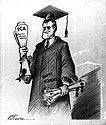


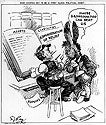
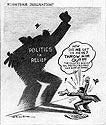
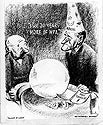
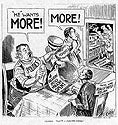
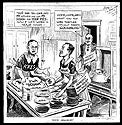
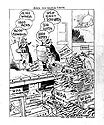
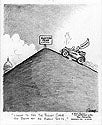
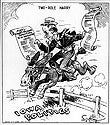
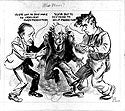
![Another Noble Experiement [sic]](/sites/default/files/images/harry_hopkins__cex14_t.jpg)
